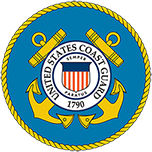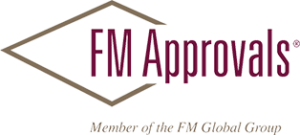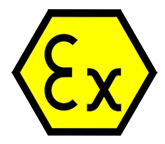 OSHA
OSHA1910.132(a) Protective equipment, including personal protective equipment for eyes, face, head, and extremities, protective clothing, respiratory devices, and protective shields and barriers, shall be provided, used, and maintained in a sanitary and reliable condition wherever it is necessary by reason of hazards of processes or environment, chemical hazards, radiological hazards, or mechanical irritants encountered in a manner capable of causing injury or impairment in the function of any part of the body through absorption, inhalation or physical contact.
 SOLAS
SOLASThe International Convention for the Safety of Life at Sea (SOLAS) is an international maritime safety treaty from the International Maritime Organization (IMO), the maritime arm of the United Nations. It regulates safety of life at sea, which includes any ocean-going vessels.
SOLAS REG.II-2/15.2.11 – Oil fuel lines shall be screened or otherwise suitably protected to avoid, as far as practicable, oil spray or oil leakage onto hot surfaces, into machinery air intakes, or other sources of ignition. The number of joints in such piping systems shall be kept to a minimum.
 U.S. Coast Guard
U.S. Coast Guard 46 CFR 56.50-60 Systems Containing Oil (j) – Piping conveying oil must be run well away from hot surfaces wherever possible. Where such leads are unavoidable, only welded joints are to be used, or alternatively, suitable shields are to be fitted in the way of flanged or mechanical pipe joints when welded joints are not practicable.
46 CFR 56.50-65 – Burner fuel-oil service systems(c) – Piping between service pumps and burners shall be located so as to be readily observable, and all bolted flange joints shall be provided with a wraparound deflector to deflect spray in case of a leak.
 FM 4999
FM 4999Approval Standard 4999 states approval requirements for Spray Fire Shields. Spray Fire Shields are used over mechanical joints in piping systems that carry flammable liquids. Their purpose is to prevent a spray fire from developing when a mechanical joint fails and as a consequence, develops a leak in the form of a highly pressured spray.
Past experience has shown that a number of fire losses have been caused by the failure of mechanical joints such as fittings and flanges. When this happens, a pressurized release of flammable fluid occurs which often results in a pressured spray fire. Such fires create a severe challenge because they cannot be extinguished or controlled with conventional sprinkler systems. The intent of this standard is to evaluate products that can be installed as a shield or guard around a fitting such that if the fitting fails, the shield will disrupt or prevent the formation of a high-pressure spray.
The Dangerous Substances and Explosive Atmospheres Regulations 2002 (DSEAR) is a set of regulations in the U.K. that are intended to provide protection against risks from fire, explosion and similar events arising from dangerous substances used or present in the workplace. From June 2015 DSEAR also covers gases under pressure and substances that are corrosive to metals. This is to allow for changes in the EU Chemical Agents Directive the physical hazards aspects of which are enacted in Great Britain through DSEAR.
They set minimum requirements for the protection of workers from fire and explosion risks related to dangerous substances and potentially explosive atmospheres and from gases under pressure and substances corrosive to metals and require employers to control the risks to the safety of employees and others from these hazards.
 ATEX
ATEXATEX is the name commonly given to the two European Directives for controlling explosive atmospheres:
Directive 99/92/EC (also known as ‘ATEX 137’ or the ‘ATEX Workplace Directive’) on minimum requirements for improving the health and safety protection of workers potentially at risk from explosive atmospheres. The text of the Directive and the supporting EU produced guidelines are available on the EU-website. For more information on how the requirements of the Directive have been put into effect in Great Britain see the information in the section Explosive atmospheres in the workplace below.
Directive 94/9/EC (also known as ‘ATEX 95’ or ‘the ATEX Equipment Directive’) on the approximation of the laws of Members States concerning equipment and protective systems intended for use in potentially explosive atmospheres. The text of the Directive and EU produced supporting guidelines are available on the EU website. For more information on how the requirements of the Directive have been put into effect in Great Britain see the section on Equipment and protective systems intended for use in explosive atmospheres.
 COMAH
COMAHThe Control of Major Accident Hazards Regulations 2015 (COMAH) are the enforcing regulations within the United Kingdom. They are applicable to any establishment storing or otherwise handling large quantities of industrial chemicals of a hazardous nature. Types of establishments include chemical warehousing, chemical production facilities and some distributors.
Their main aim is to prevent and mitigate the effects of those major accidents involving dangerous substances, such as chlorine, liquefied petroleum gas, explosives and arsenic pentoxide which can cause serious damage/harm to people and/or the environment. The COMAH Regulations treat risks to the environment as seriously as those to people.
Our website is available in many languages, courtesy of Google Translate. Select your preferred language below.
The eCommerce portion of our website is available in multiple currencies as well. Select the currency you wish to pay in below.
Currently:
US Dollars (USD)
Pounds Sterling (GBP)
Please note: We currently only offer shipping to the US and UK, and the currency of each order must match its destination country. If you would like to ship to a different country, you will be able to submit your cart for a quote on the checkout page.